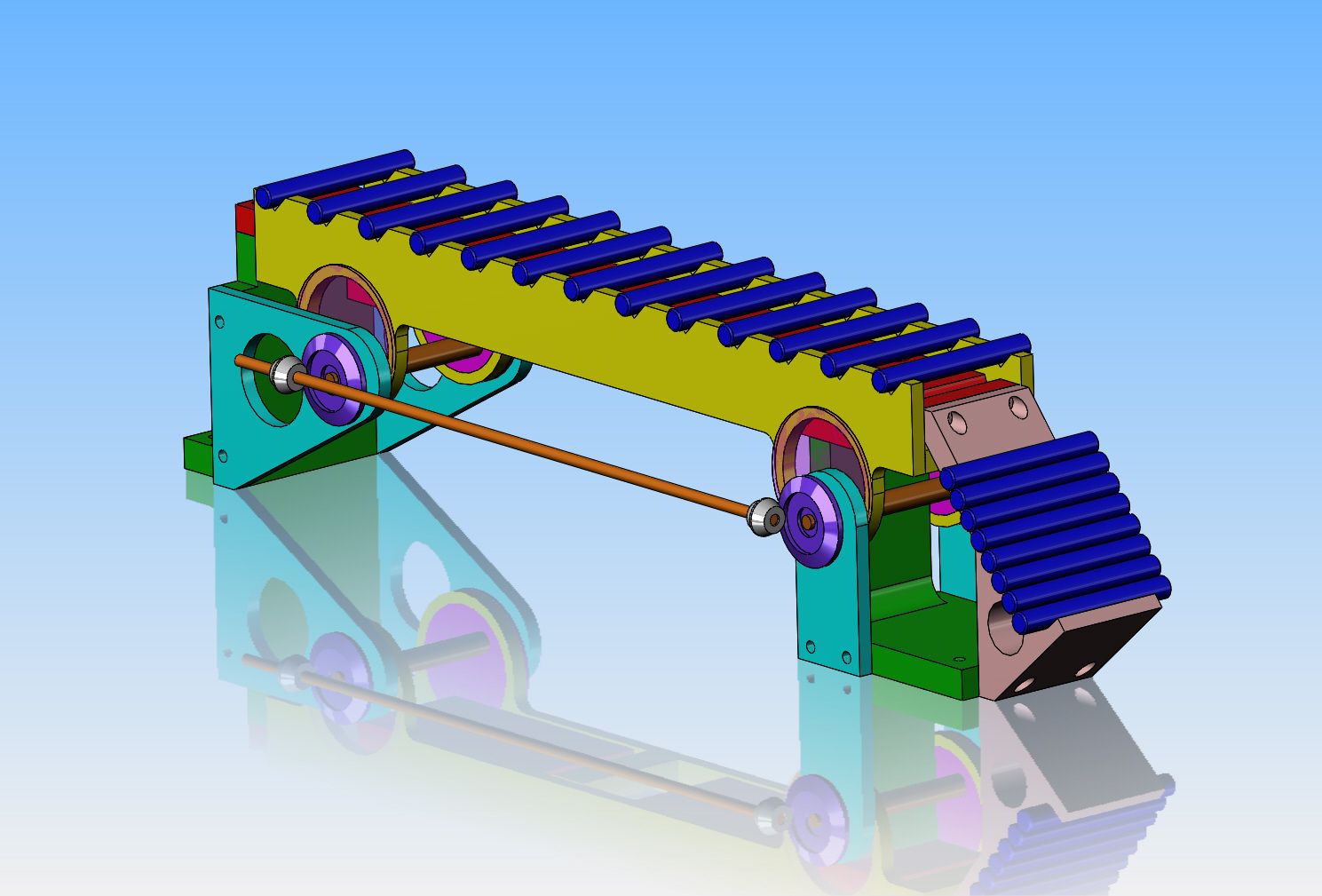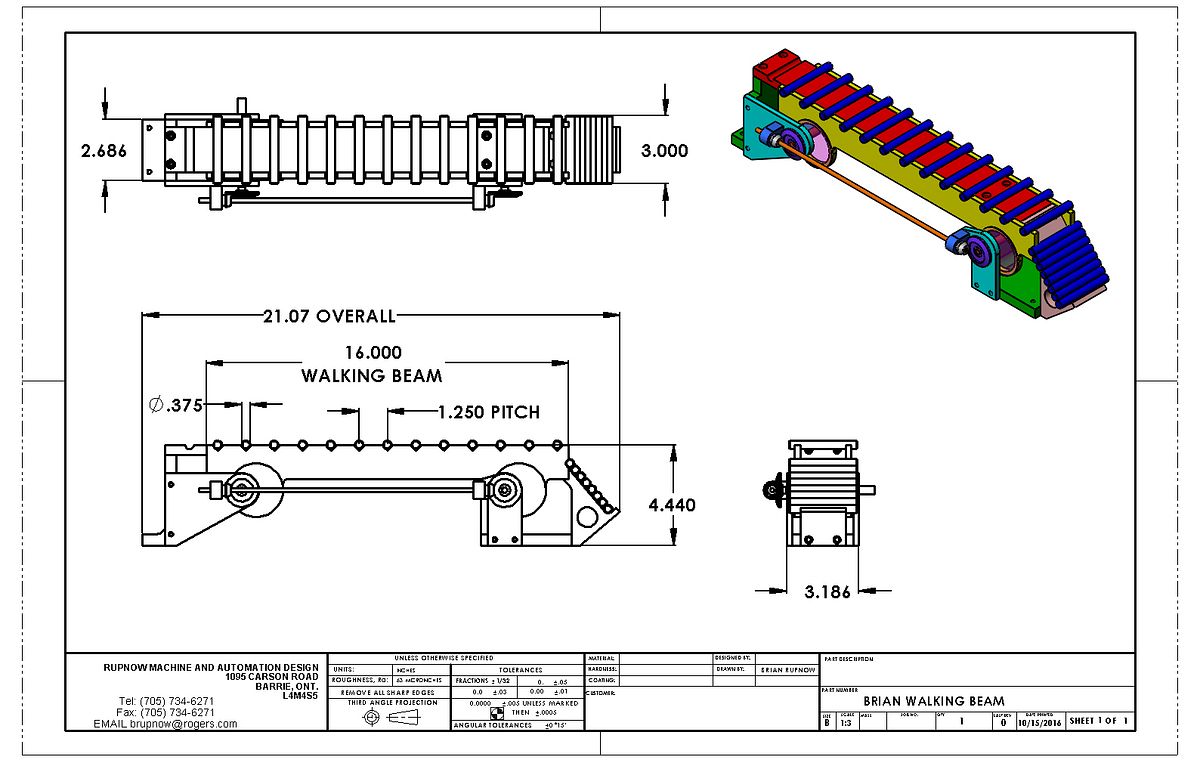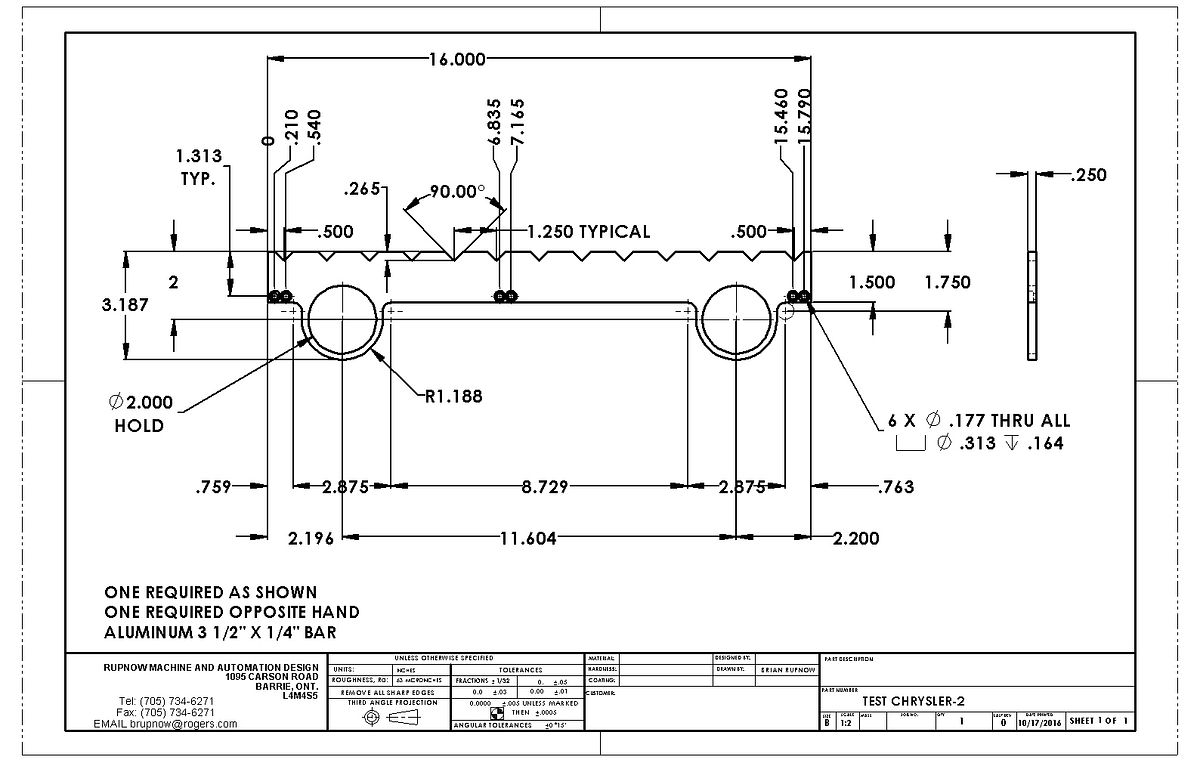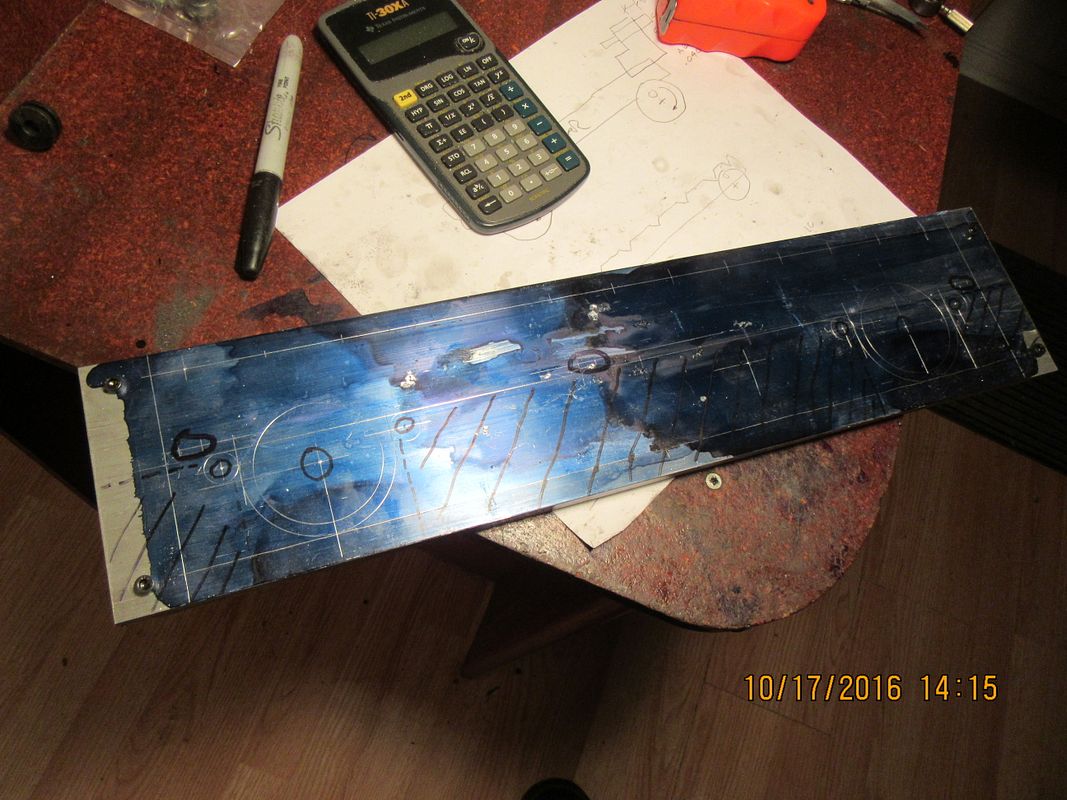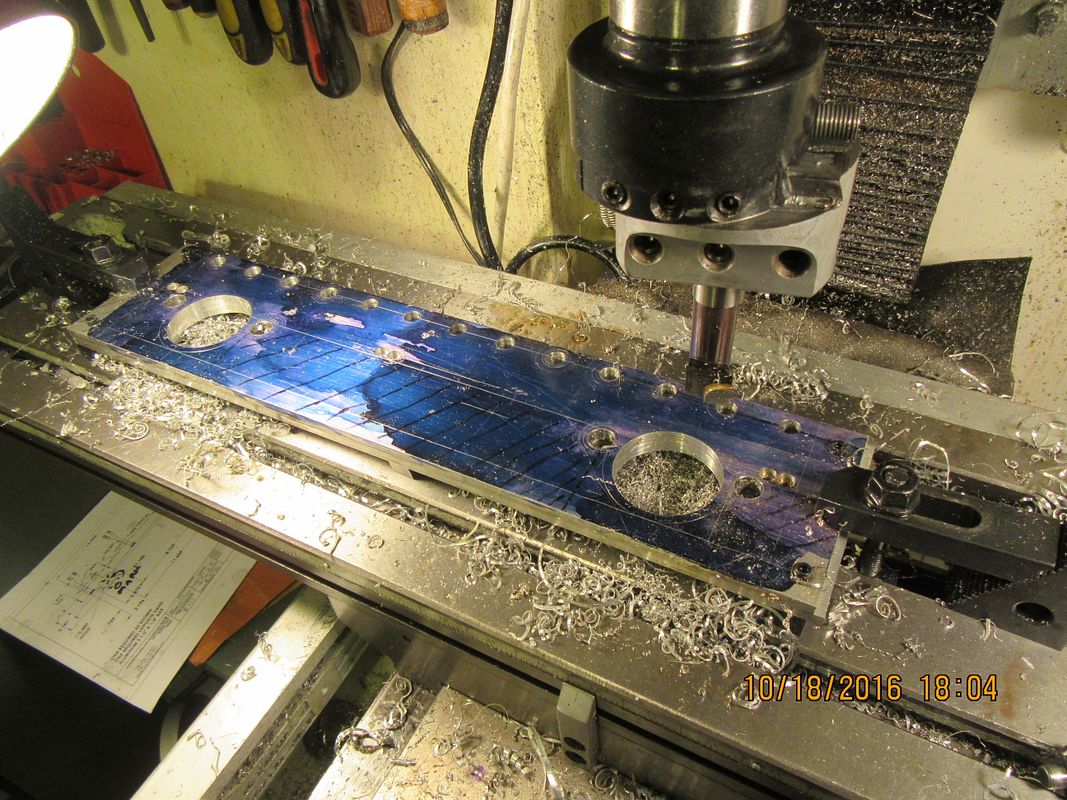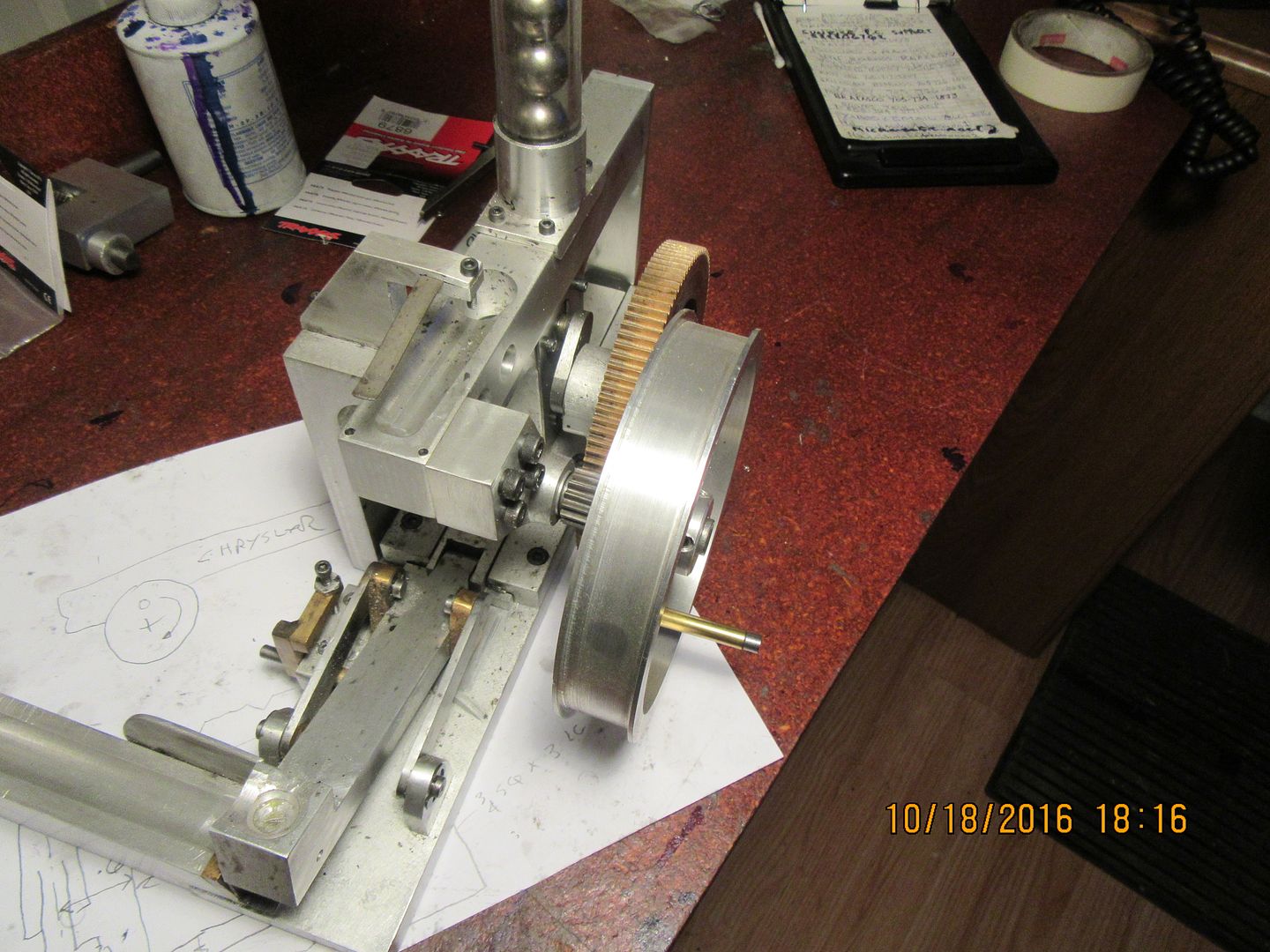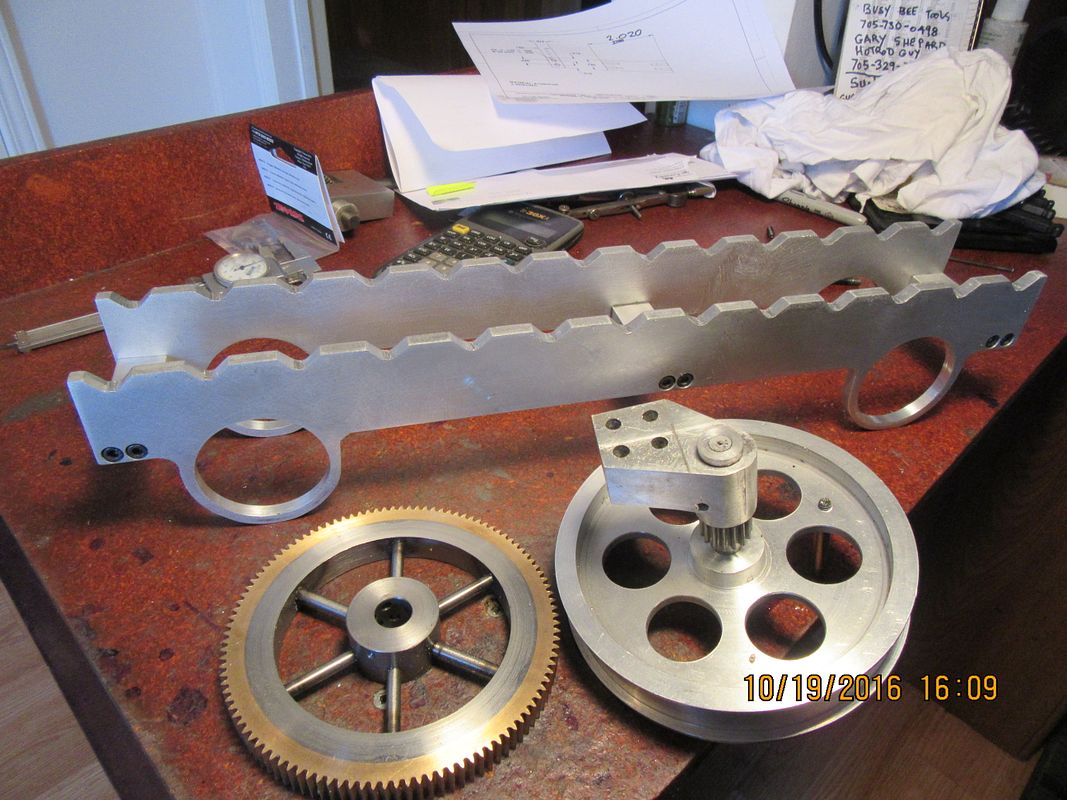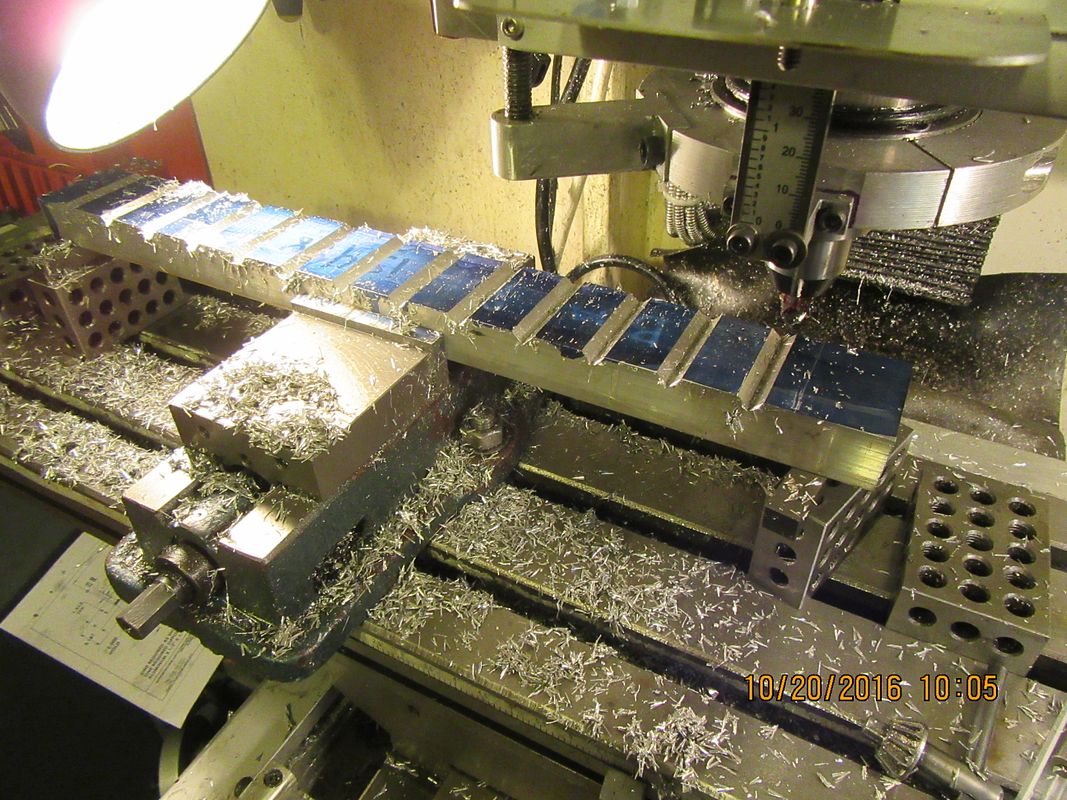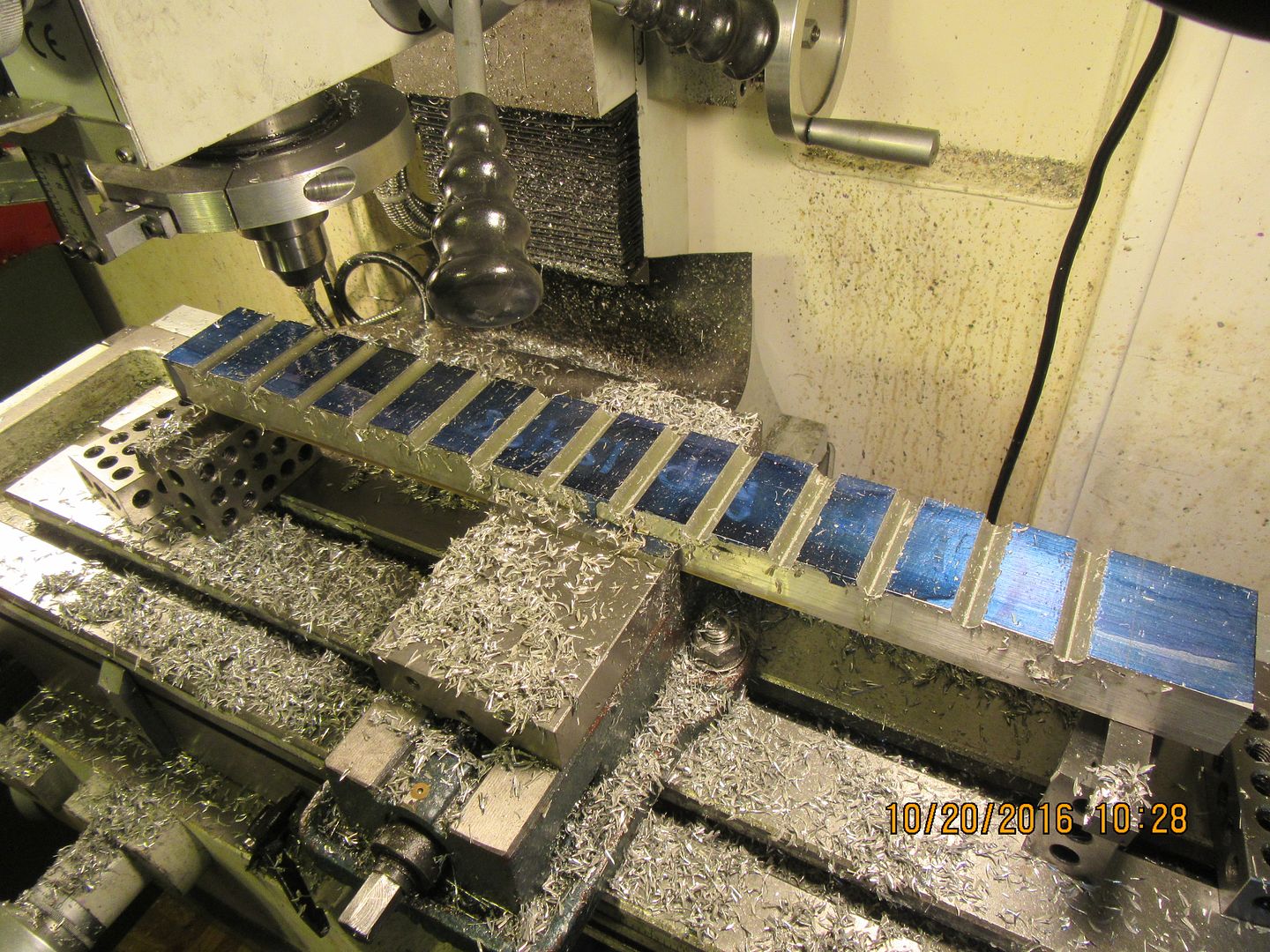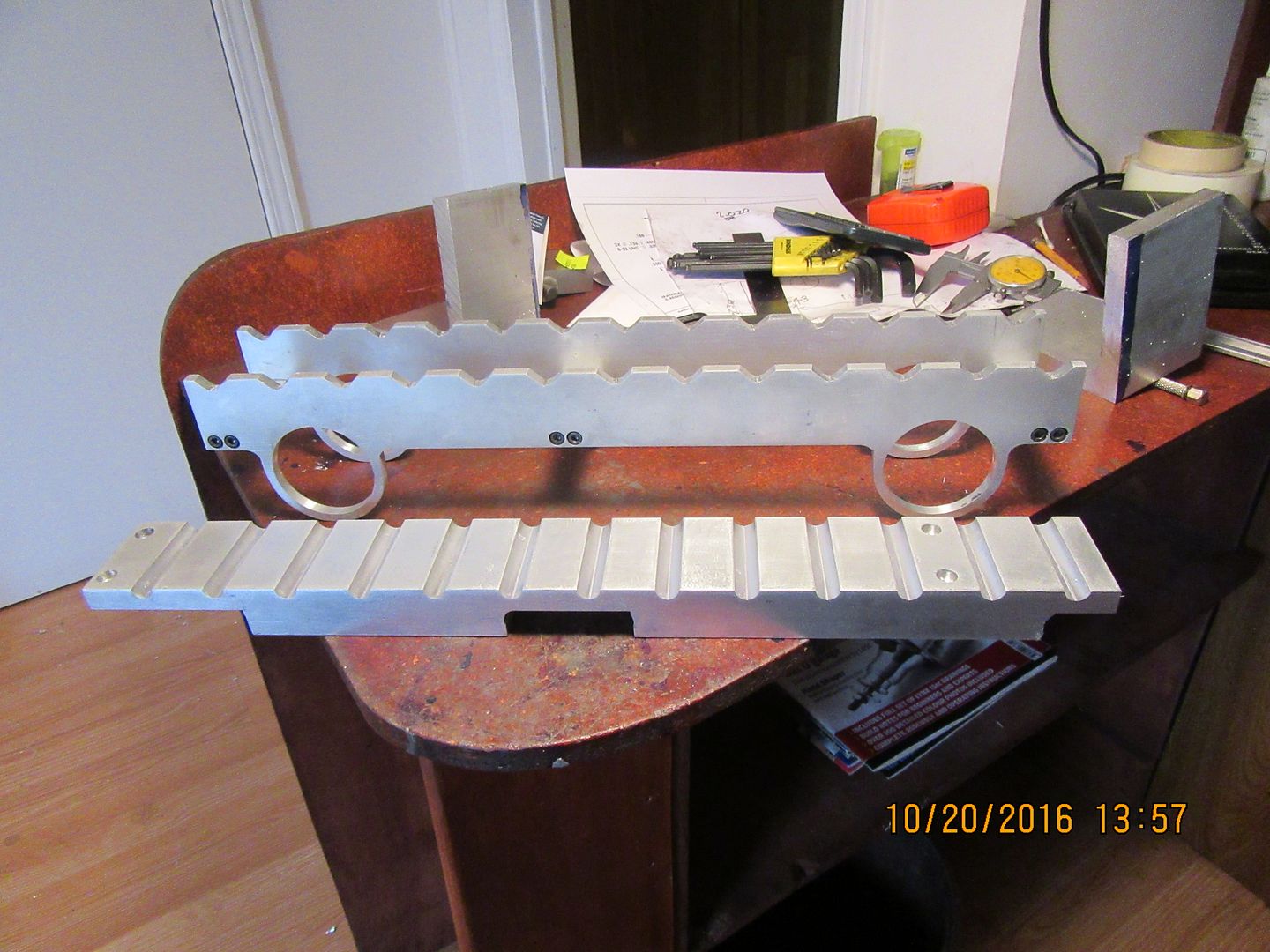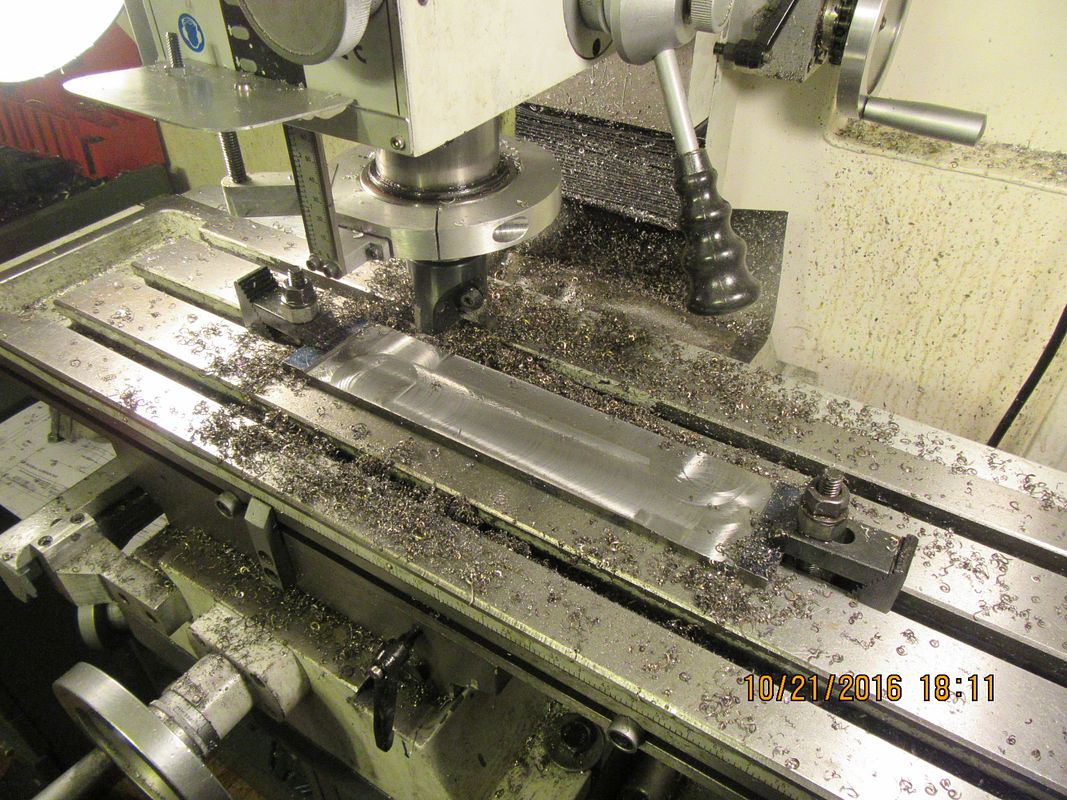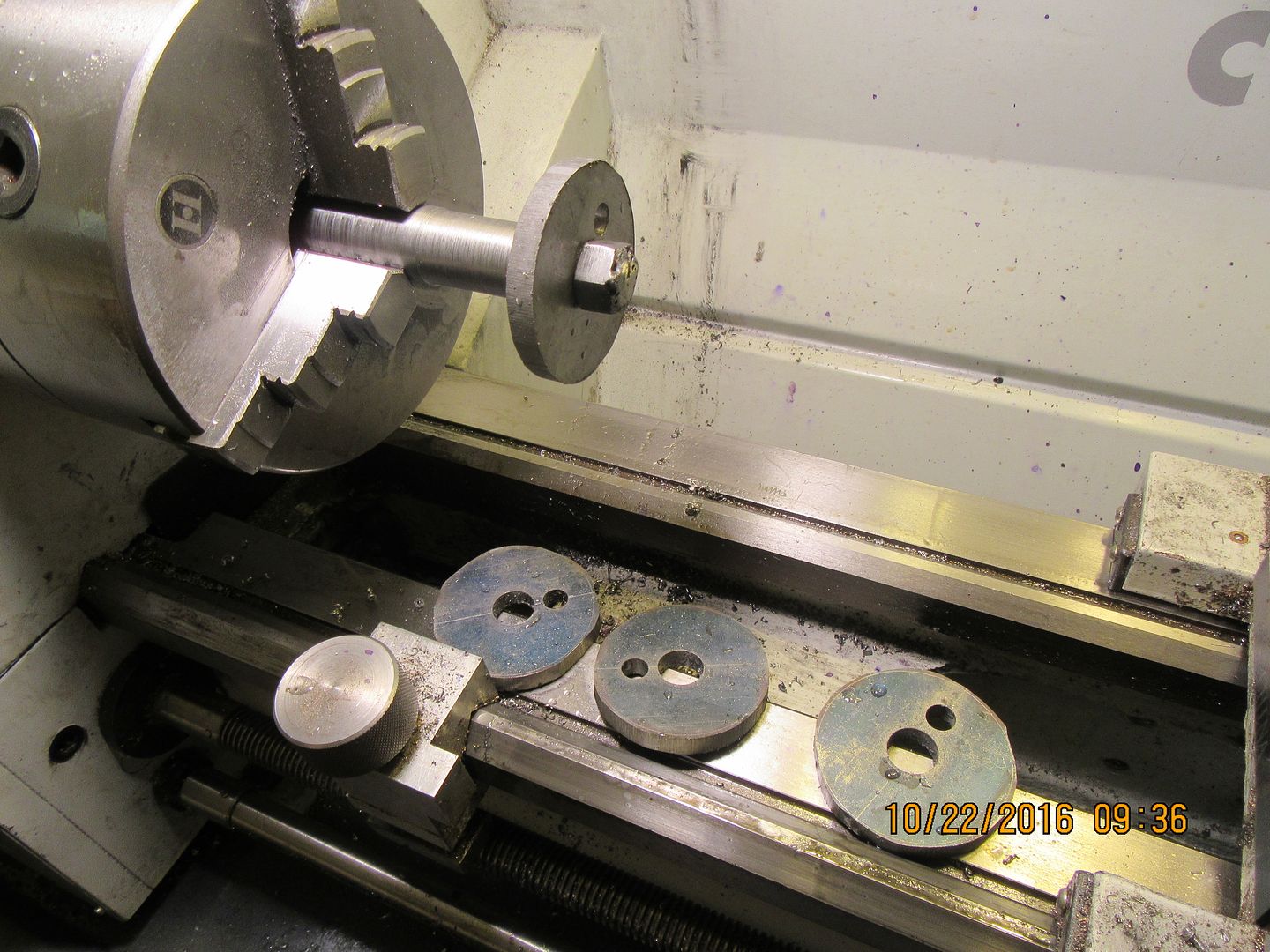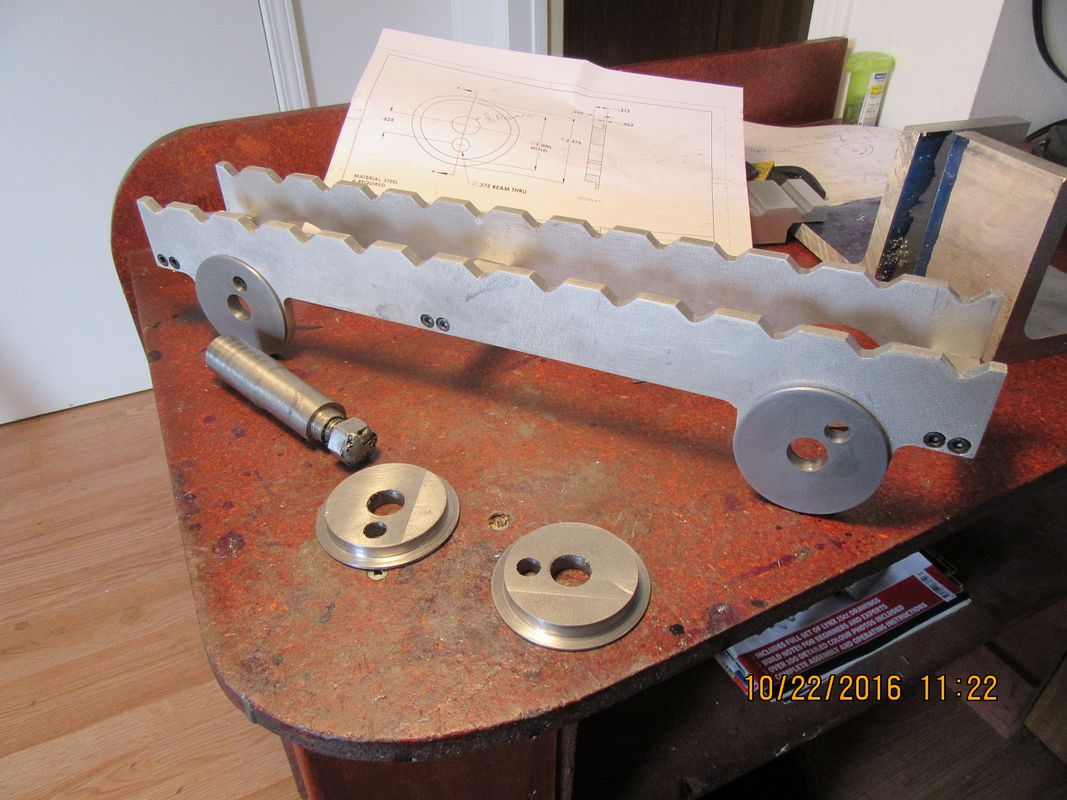I am tired of building engines. I need another machine to drive with my engines, and this time I think I will try something "industrial" in nature. One of the more fascinating types of conveyors is a "walking beam" conveyor. These conveyors were, when first invented, used to convey a piece of material from one position to the next, to the next, thru a series of "stations", where the piece being conveyed had some type of automated function performed on it at each station. Newer "walking beam" conveyors are mostly driven by either hydraulics, rack and pinion gears, or a combination of both. Earlier walking beams were purely mechanical in their operation. I have been playing about with concepts this morning, and even went across town to the model R.C. hobby shop and purchased a couple of sets of metal miter gears to be used to transfer power from the blue disc seen at one end of the animation to the blue disc on the other end, utilizing a shaft drive like the older BSA motorcycles. This link takes you to a short video of the basic concept. I will be working on a fully developed 3D model of this machine over the next few weeks, and then hope to build it in my machine shop.----Brian
[ame]https://www.youtube.com/watch?v=ak2eMgt7yLw&feature=youtu.be[/ame]
[ame]https://www.youtube.com/watch?v=ak2eMgt7yLw&feature=youtu.be[/ame]






